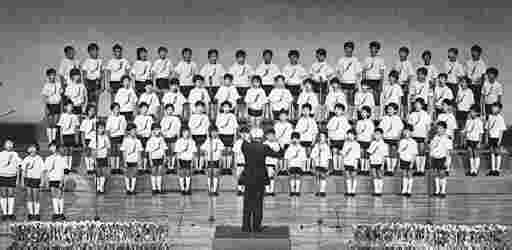
Figure 3.--The boys appear in both formal and informal costumes. This costume is more informal than many European choirs. This is the regular concert of Tokyo FM Choir in 1989.
One of the most important Tokyo choir is now the Tokyo FM Choir. FM Tokyo is a music radio station in Tokyo. I think the old Victor choir was their predecessor; the one was
merged into theother. The choir served as backup to
the Southern All Stars, for a decade or more, Japan's most popular
mainstream rock band). The choir's promters clain in 1999 the "Japan's easiest to
love boy's choir is now Japan's easiest to listen to." I'm not entirely sure what
they mean by that.
Tokyo FM Broadcasting purchased the Victor Boys Club, Japan on April 1, 1985. The choir was
renamed the Tokyo FM Choir. Tokyo FM informs HBC that, "All the VBC choristers continued their lives as littlesingers with Tokyo FM."
I'm not sure what type of music the choir performs. It appears to be mostly popular
music and children's songs. Christmas music is a popular annual staple of the choir.
The Tokyo FM Choir not only gives public performances, but they also make
recordings which are marketed by Tokyo FM. The choir uniform is not required at these
recording sessions, but many boys wear them anyway.
The Tokyo FM Choir uniform in the 1990s is a typical Japanese public elementry school
boy's uniform. Boys wear colored "T" shirts, black shorts and white kneesocks. These
informal uniforms are quite common at public schools. The boys at private schools
normally wear more formal uniforms with blazers and ties.
The choir currently performs in different costumes, including:
Green sweaters: One costume is a green shirt or sweatshirt, black short pants, and white kneesocks.
Yellow sweaters: One costume is a green shirt or sweatshirt, black short pants, and white kneesocks.

Figure 3.--The boys appear in both formal and informal costumes. This costume is more informal than many European choirs. This is the regular concert of Tokyo FM Choir in 1989. |
I am not sure just which costumes are worn for what occassions. They seem to wear their informal colorful jumpers for rather formal performances, which differs from the general
practice with European choirs. One Japanese source reports that, "In Japan, most people think that it is natural (and suitable) for children to wear casual clothes." The Japanese
sppear to believe that it is natural that chidren wear chidren-like clothes. Japanese parents like the image of "Active boys". This impression is important even for choirs. Thus
while some Japanese choirs have formal uniforms, some have both formal and informal
uniforms.
Navigate the Historic Boys' Clothing Web Site:
[Introduction]
[Chronologies]
[Style Index]
[Biographies]
[Bibliographies]
[Contributions]
[Activities]
[Countries]
[Boys' Clothing Home]
Navigate the Historic Boys' Clothing Japnese pages:
[Main Japanese page]
[Japanese choirs]
[Japanese monarchy]
[Japanese school uniform]
[Japanese scouts]
[Japanese music recitals]
[Japanese department stores]
Navigate the Historic Boys' Clothing Web choir costume pages:
[Return to the Main Japanese choir page]
[Return to the Main choir page]
[Australia]
[Austria]
[Belgium]
[Bulgaria]
[Denmark]
[England]
[France]
[Finland]
[Germany]
[Ireland]
[Netherlands]
[New Zealand]
[Poland]
[South Africa]
[United States]